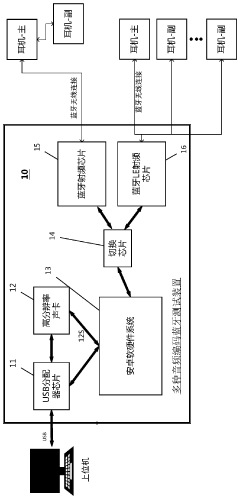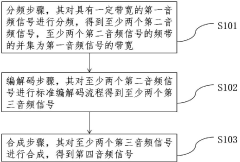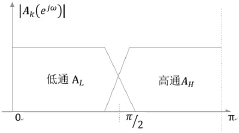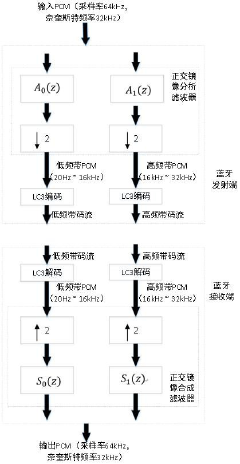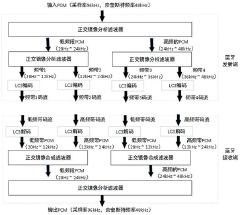How LDAC Handles High-Resolution Audio Files?
JUL 4, 20259 MIN READ
Generate Your Research Report Instantly with AI Agent
Patsnap Eureka helps you evaluate technical feasibility & market potential.
LDAC Technology Background and Objectives
LDAC (Low Latency Audio Codec) is a cutting-edge audio coding technology developed by Sony Corporation in 2015. It represents a significant advancement in wireless audio transmission, particularly in the realm of high-resolution audio. The primary objective of LDAC is to enable the transmission of high-quality audio over Bluetooth connections, addressing the limitations of previous codecs in handling high-resolution audio files.
The development of LDAC was driven by the growing demand for high-fidelity audio experiences in wireless devices. As consumer preferences shifted towards higher quality audio, traditional Bluetooth codecs like SBC (Sub-band Coding) and AAC (Advanced Audio Coding) were found inadequate in preserving the full spectrum of high-resolution audio. LDAC aimed to bridge this gap by offering a solution that could maintain audio quality comparable to wired connections.
LDAC's technology is based on adaptive bit rate coding, which allows it to adjust its data transmission rate based on the wireless environment and device capabilities. This adaptability is crucial in maintaining stable connections while maximizing audio quality. The codec supports three modes of operation: 330 kbps, 660 kbps, and 990 kbps, with the highest mode capable of transmitting audio at near CD quality.
One of the key innovations of LDAC is its ability to handle audio files up to 24-bit/96 kHz, which is significantly higher than the 16-bit/44.1 kHz limitation of CD-quality audio. This capability allows LDAC to preserve the nuances and details present in high-resolution audio files, providing a more immersive and authentic listening experience.
The evolution of LDAC technology has been closely tied to the advancement of Bluetooth standards. With the introduction of Bluetooth 5.0 and subsequent versions, LDAC has been able to leverage improved data transfer rates and connection stability, further enhancing its performance in real-world scenarios.
LDAC's development also aligns with the broader trend of improving wireless audio quality across the consumer electronics industry. As part of this trend, LDAC has been adopted by various smartphone manufacturers and audio equipment producers, expanding its ecosystem and driving further innovation in the field of wireless audio transmission.
Looking forward, the objectives for LDAC technology include further reducing latency, improving energy efficiency, and expanding compatibility across a wider range of devices. These goals are crucial for maintaining LDAC's position as a leading audio codec in an increasingly competitive market for high-quality wireless audio solutions.
The development of LDAC was driven by the growing demand for high-fidelity audio experiences in wireless devices. As consumer preferences shifted towards higher quality audio, traditional Bluetooth codecs like SBC (Sub-band Coding) and AAC (Advanced Audio Coding) were found inadequate in preserving the full spectrum of high-resolution audio. LDAC aimed to bridge this gap by offering a solution that could maintain audio quality comparable to wired connections.
LDAC's technology is based on adaptive bit rate coding, which allows it to adjust its data transmission rate based on the wireless environment and device capabilities. This adaptability is crucial in maintaining stable connections while maximizing audio quality. The codec supports three modes of operation: 330 kbps, 660 kbps, and 990 kbps, with the highest mode capable of transmitting audio at near CD quality.
One of the key innovations of LDAC is its ability to handle audio files up to 24-bit/96 kHz, which is significantly higher than the 16-bit/44.1 kHz limitation of CD-quality audio. This capability allows LDAC to preserve the nuances and details present in high-resolution audio files, providing a more immersive and authentic listening experience.
The evolution of LDAC technology has been closely tied to the advancement of Bluetooth standards. With the introduction of Bluetooth 5.0 and subsequent versions, LDAC has been able to leverage improved data transfer rates and connection stability, further enhancing its performance in real-world scenarios.
LDAC's development also aligns with the broader trend of improving wireless audio quality across the consumer electronics industry. As part of this trend, LDAC has been adopted by various smartphone manufacturers and audio equipment producers, expanding its ecosystem and driving further innovation in the field of wireless audio transmission.
Looking forward, the objectives for LDAC technology include further reducing latency, improving energy efficiency, and expanding compatibility across a wider range of devices. These goals are crucial for maintaining LDAC's position as a leading audio codec in an increasingly competitive market for high-quality wireless audio solutions.
Market Demand for Hi-Res Audio Transmission
The market demand for high-resolution audio transmission has been steadily growing in recent years, driven by the increasing consumer appetite for premium audio experiences. As digital music streaming becomes more prevalent, audiophiles and casual listeners alike are seeking ways to enjoy music with greater fidelity and detail. This trend has led to a surge in demand for technologies that can efficiently transmit high-resolution audio files without compromising quality.
The rise of high-resolution audio streaming services has significantly contributed to this market demand. Platforms like Tidal, Amazon Music HD, and Qobuz have introduced tiers that offer lossless and high-resolution audio options, catering to consumers who desire a more immersive listening experience. This shift has created a ripple effect, encouraging hardware manufacturers to develop compatible devices that can support these higher-quality audio formats.
In the mobile device sector, there's a growing emphasis on incorporating high-resolution audio capabilities. Smartphone manufacturers are increasingly integrating support for high-resolution audio codecs, recognizing the value proposition for consumers who use their phones as primary music playback devices. This trend is particularly evident in flagship models, where high-resolution audio support is often touted as a key feature.
The automotive industry has also recognized the potential of high-resolution audio, with luxury car manufacturers integrating advanced audio systems capable of reproducing high-fidelity sound. This has created a new market segment for in-car entertainment systems that can handle high-resolution audio transmission, further driving demand for efficient codec technologies.
The professional audio sector, including recording studios and live sound reinforcement, has shown a keen interest in high-resolution audio transmission technologies. As the industry moves towards higher sampling rates and bit depths, there's a growing need for codecs that can handle these larger file sizes without introducing latency or compromising quality during live performances or remote collaborations.
Consumer electronics manufacturers have responded to this demand by introducing a wide range of products designed to support high-resolution audio. From dedicated digital audio players to wireless headphones and speakers, there's a growing ecosystem of devices that cater to the high-resolution audio market. This proliferation of compatible hardware further fuels the demand for efficient transmission technologies like LDAC.
As internet infrastructure continues to improve globally, with the rollout of 5G networks and faster broadband connections, the technical barriers to streaming high-resolution audio are diminishing. This improved connectivity is expected to accelerate the adoption of high-resolution audio streaming services and increase the demand for technologies that can efficiently transmit these larger audio files.
The rise of high-resolution audio streaming services has significantly contributed to this market demand. Platforms like Tidal, Amazon Music HD, and Qobuz have introduced tiers that offer lossless and high-resolution audio options, catering to consumers who desire a more immersive listening experience. This shift has created a ripple effect, encouraging hardware manufacturers to develop compatible devices that can support these higher-quality audio formats.
In the mobile device sector, there's a growing emphasis on incorporating high-resolution audio capabilities. Smartphone manufacturers are increasingly integrating support for high-resolution audio codecs, recognizing the value proposition for consumers who use their phones as primary music playback devices. This trend is particularly evident in flagship models, where high-resolution audio support is often touted as a key feature.
The automotive industry has also recognized the potential of high-resolution audio, with luxury car manufacturers integrating advanced audio systems capable of reproducing high-fidelity sound. This has created a new market segment for in-car entertainment systems that can handle high-resolution audio transmission, further driving demand for efficient codec technologies.
The professional audio sector, including recording studios and live sound reinforcement, has shown a keen interest in high-resolution audio transmission technologies. As the industry moves towards higher sampling rates and bit depths, there's a growing need for codecs that can handle these larger file sizes without introducing latency or compromising quality during live performances or remote collaborations.
Consumer electronics manufacturers have responded to this demand by introducing a wide range of products designed to support high-resolution audio. From dedicated digital audio players to wireless headphones and speakers, there's a growing ecosystem of devices that cater to the high-resolution audio market. This proliferation of compatible hardware further fuels the demand for efficient transmission technologies like LDAC.
As internet infrastructure continues to improve globally, with the rollout of 5G networks and faster broadband connections, the technical barriers to streaming high-resolution audio are diminishing. This improved connectivity is expected to accelerate the adoption of high-resolution audio streaming services and increase the demand for technologies that can efficiently transmit these larger audio files.
LDAC Technical Challenges and Limitations
LDAC, while a powerful codec for high-resolution audio transmission, faces several technical challenges and limitations. One of the primary issues is the trade-off between audio quality and transmission stability. As LDAC operates at high bitrates, it requires a robust and stable Bluetooth connection to maintain consistent audio quality. In environments with significant electromagnetic interference or physical obstacles, the codec may struggle to maintain its high-quality transmission, potentially resulting in dropouts or reduced audio fidelity.
Another challenge lies in the codec's power consumption. The processing required for encoding and decoding high-resolution audio at high bitrates demands substantial computational resources, which can lead to increased power drain on both the transmitting and receiving devices. This is particularly problematic for portable devices with limited battery capacity, potentially impacting the overall user experience.
LDAC's variable bitrate system, while designed to adapt to different connection qualities, introduces its own set of challenges. The codec must constantly monitor the connection and adjust its bitrate accordingly, which can lead to fluctuations in audio quality during playback. This adaptive behavior, while necessary for maintaining a stable connection, may result in a less consistent listening experience compared to fixed-rate codecs.
The codec's complexity also presents implementation challenges for hardware manufacturers. Integrating LDAC support requires specific hardware capabilities and software optimizations, which can increase production costs and potentially limit its adoption across a wide range of devices. This complexity extends to the certification process, as devices must meet Sony's standards to be officially LDAC-compatible.
Compatibility issues arise when considering the broader audio ecosystem. While LDAC excels in transmitting high-resolution audio, it is not universally supported across all operating systems and devices. This lack of ubiquity can create fragmentation in the market and potentially confuse consumers who may not understand why their high-resolution audio files are not playing at full quality on certain devices.
Lastly, LDAC faces challenges in terms of latency. Although it performs well compared to some other Bluetooth codecs, the processing required for high-resolution audio can introduce noticeable delay, which may be problematic for applications requiring precise audio-video synchronization or real-time audio processing. This latency issue becomes more pronounced at higher bitrates, creating a balancing act between audio quality and responsiveness.
Another challenge lies in the codec's power consumption. The processing required for encoding and decoding high-resolution audio at high bitrates demands substantial computational resources, which can lead to increased power drain on both the transmitting and receiving devices. This is particularly problematic for portable devices with limited battery capacity, potentially impacting the overall user experience.
LDAC's variable bitrate system, while designed to adapt to different connection qualities, introduces its own set of challenges. The codec must constantly monitor the connection and adjust its bitrate accordingly, which can lead to fluctuations in audio quality during playback. This adaptive behavior, while necessary for maintaining a stable connection, may result in a less consistent listening experience compared to fixed-rate codecs.
The codec's complexity also presents implementation challenges for hardware manufacturers. Integrating LDAC support requires specific hardware capabilities and software optimizations, which can increase production costs and potentially limit its adoption across a wide range of devices. This complexity extends to the certification process, as devices must meet Sony's standards to be officially LDAC-compatible.
Compatibility issues arise when considering the broader audio ecosystem. While LDAC excels in transmitting high-resolution audio, it is not universally supported across all operating systems and devices. This lack of ubiquity can create fragmentation in the market and potentially confuse consumers who may not understand why their high-resolution audio files are not playing at full quality on certain devices.
Lastly, LDAC faces challenges in terms of latency. Although it performs well compared to some other Bluetooth codecs, the processing required for high-resolution audio can introduce noticeable delay, which may be problematic for applications requiring precise audio-video synchronization or real-time audio processing. This latency issue becomes more pronounced at higher bitrates, creating a balancing act between audio quality and responsiveness.
Current LDAC Implementation Methods
01 LDAC codec for high-resolution audio transmission
LDAC is a high-resolution audio codec developed for Bluetooth audio transmission. It allows for the transfer of high-quality audio files over wireless connections, maintaining a higher bitrate and better sound quality compared to standard Bluetooth audio codecs. LDAC supports various sampling rates and bit depths, enabling the transmission of audio files that closely match the original studio quality.- LDAC codec for high-resolution audio transmission: LDAC is a high-resolution audio codec developed for Bluetooth audio transmission. It allows for the transfer of high-quality audio files over wireless connections, maintaining a higher bitrate and better sound quality compared to standard Bluetooth codecs. This technology enables users to enjoy high-resolution audio files on compatible devices without significant loss in audio quality.
- Audio file processing and compression techniques: Various techniques are employed to process and compress high-resolution audio files while maintaining their quality. These methods include advanced encoding algorithms, efficient data compression, and optimized signal processing. Such techniques allow for the storage and transmission of high-resolution audio files with reduced file sizes without compromising the audio quality significantly.
- Playback and decoding of high-resolution audio files: Specialized hardware and software solutions are developed for the playback and decoding of high-resolution audio files. These systems are designed to handle the increased data rate and complexity of high-resolution audio formats, ensuring accurate reproduction of the original audio signal. Advanced digital-to-analog converters (DACs) and audio processing chips are often employed to maintain the fidelity of the high-resolution audio during playback.
- Integration with audio streaming services: High-resolution audio file support is being integrated into various audio streaming services and platforms. This integration allows users to access and stream high-quality audio content over the internet, providing a seamless experience for enjoying high-resolution audio across different devices and platforms. Content delivery networks and adaptive streaming technologies are optimized to handle the increased bandwidth requirements of high-resolution audio files.
- Device compatibility and certification for high-resolution audio: To ensure proper playback of high-resolution audio files, devices and audio systems undergo certification processes. These certifications verify that the hardware and software components meet the necessary specifications for handling high-resolution audio formats. This includes support for specific codecs, minimum bitrate requirements, and the ability to reproduce the full frequency range of high-resolution audio files accurately.
02 Audio file processing and playback systems
Systems and methods for processing and playing back high-resolution audio files, including LDAC-encoded content. These systems may involve specialized hardware or software components designed to handle the decoding and playback of high-bitrate audio streams, ensuring optimal sound quality and performance.Expand Specific Solutions03 Integration with mobile devices and streaming services
Implementation of LDAC and other high-resolution audio technologies in mobile devices and streaming platforms. This includes the development of compatible hardware, software applications, and streaming protocols to support the playback and management of high-resolution audio files on smartphones, tablets, and other portable devices.Expand Specific Solutions04 Audio compression and encoding techniques
Advanced compression and encoding methods used in creating high-resolution audio files, including those compatible with LDAC. These techniques aim to maintain audio quality while optimizing file size and transmission efficiency, crucial for streaming and storage of high-fidelity audio content.Expand Specific Solutions05 Audio quality enhancement and upscaling
Technologies for enhancing and upscaling audio quality, potentially applicable to LDAC and other high-resolution audio formats. This includes methods for improving the perceived quality of audio playback, such as frequency response correction, dynamic range expansion, and spatial audio processing.Expand Specific Solutions
Key Players in Wireless Audio Technology
The LDAC (Low Latency Audio Codec) technology for high-resolution audio files is in a mature stage of development, with a growing market size due to increasing demand for high-quality audio experiences. The competitive landscape is dominated by major players like Sony, who developed LDAC, and other tech giants such as Samsung, Apple, and Huawei. These companies are integrating LDAC into their devices, particularly smartphones and audio equipment. The technology's adoption is expanding, with companies like Panasonic, NEC, and Yamaha incorporating LDAC into their audio products, indicating a broad industry acceptance and a shift towards high-fidelity wireless audio solutions.
Samsung Electronics Co., Ltd.
Technical Solution: Samsung's approach to handling high-resolution audio files incorporates LDAC technology in their Galaxy series smartphones and audio accessories. They have implemented LDAC alongside other high-quality codecs like aptX HD and their proprietary Scalable Codec[6]. Samsung's implementation allows for bitrates up to 990 kbps, supporting 24-bit/96 kHz audio transmission over Bluetooth. The company has also developed UHQ (Ultra High Quality) Audio technology, which upscales audio to 32-bit resolution for improved sound quality[7]. Samsung's dual audio feature allows streaming to two Bluetooth devices simultaneously, even when using high-resolution codecs like LDAC.
Strengths: Wide range of supported high-resolution codecs, innovative audio upscaling technology. Weaknesses: Inconsistent implementation across all product lines, potential compatibility issues with non-Samsung devices.
Apple, Inc.
Technical Solution: Apple's approach to high-resolution audio handling, while not directly using LDAC, offers a comparable solution through their AAC codec and Bluetooth implementations. Their method focuses on optimizing the entire audio chain, from source material to playback devices. Apple has developed the Apple Digital Masters program, which ensures high-quality audio masters are available on their platforms[2]. While not as high in bitrate as LDAC, Apple's implementation emphasizes perceptual audio quality and energy efficiency. They utilize adaptive bitrate streaming and have introduced Lossless Audio and Spatial Audio features to enhance the listening experience on their devices[4].
Strengths: Seamless integration within Apple ecosystem, energy-efficient. Weaknesses: Lower maximum bitrate compared to LDAC, limited compatibility outside Apple devices.
Core Innovations in LDAC Technology
Device and method for testing various audio codes of Bluetooth headset
PatentActiveCN111313984A
Innovation
- A test device including a USB distributor, Android software and hardware system, high-resolution sound card and switching chip is used. The Android software and hardware system controls the switching chip to select a Bluetooth radio frequency chip or a Bluetooth LE radio frequency chip for audio signal transmission, and supports multiple encoding formats. Such as SBC, aptX, LDAC, HWA and LC3 testing.
A method and system for realizing high sampling rate audio coding and decoding
PatentActiveCN111986685B
Innovation
- The audio signal is divided into multiple frequency bands through the frequency division step, each frequency band is encoded and decoded using a standard codec, and the encoded and decoded signals are synthesized through the synthesis step to achieve high sampling rate audio encoding and decoding. Specific methods include using an orthogonal image analysis filter to divide the audio signal, multiple LC3 audio codecs to encode and decode the divided signal, and finally synthesizing it through an orthogonal image synthesis filter to increase the sampling rate.
Compatibility with Audio Ecosystems
LDAC's compatibility with audio ecosystems plays a crucial role in its adoption and effectiveness in handling high-resolution audio files. The codec's integration into various audio devices and platforms has significantly expanded its reach and utility within the audio industry.
One of the key factors contributing to LDAC's compatibility is its support by major smartphone manufacturers. Android devices, in particular, have widely embraced LDAC technology, with many flagship models incorporating it as a standard feature. This integration allows users to seamlessly stream high-resolution audio from their smartphones to compatible audio devices, enhancing the overall listening experience.
In addition to smartphones, LDAC has found its way into a diverse range of audio equipment. Wireless headphones, earbuds, and speakers from numerous brands now support LDAC, providing consumers with a wide selection of compatible devices. This broad adoption has created a robust ecosystem where users can easily find LDAC-enabled products that suit their preferences and needs.
The codec's compatibility extends beyond consumer electronics to professional audio equipment as well. Many high-end digital audio players (DAPs) and portable music players now feature LDAC support, catering to audiophiles and music professionals who demand the highest audio quality in their portable setups.
LDAC's integration with popular music streaming services has further solidified its position within the audio ecosystem. Several major platforms have incorporated LDAC support, allowing subscribers to take full advantage of high-resolution audio streaming when using compatible devices. This synergy between content providers and hardware manufacturers has created a seamless end-to-end solution for high-quality audio delivery.
The codec's compatibility with various operating systems and software applications has also contributed to its widespread adoption. Audio player apps and media center software often include LDAC support, enabling users to leverage the codec's capabilities across different devices and platforms.
Furthermore, LDAC's interoperability with other Bluetooth audio codecs ensures that devices can fall back to alternative codecs when necessary, maintaining connectivity and audio playback even in non-LDAC environments. This flexibility enhances the overall user experience and prevents compatibility issues in mixed-codec scenarios.
As the audio industry continues to evolve, LDAC's ongoing development and adaptation to new technologies and standards will be crucial in maintaining its compatibility and relevance within the broader audio ecosystem. The codec's ability to integrate with emerging audio formats and devices will play a significant role in shaping its future success and adoption.
One of the key factors contributing to LDAC's compatibility is its support by major smartphone manufacturers. Android devices, in particular, have widely embraced LDAC technology, with many flagship models incorporating it as a standard feature. This integration allows users to seamlessly stream high-resolution audio from their smartphones to compatible audio devices, enhancing the overall listening experience.
In addition to smartphones, LDAC has found its way into a diverse range of audio equipment. Wireless headphones, earbuds, and speakers from numerous brands now support LDAC, providing consumers with a wide selection of compatible devices. This broad adoption has created a robust ecosystem where users can easily find LDAC-enabled products that suit their preferences and needs.
The codec's compatibility extends beyond consumer electronics to professional audio equipment as well. Many high-end digital audio players (DAPs) and portable music players now feature LDAC support, catering to audiophiles and music professionals who demand the highest audio quality in their portable setups.
LDAC's integration with popular music streaming services has further solidified its position within the audio ecosystem. Several major platforms have incorporated LDAC support, allowing subscribers to take full advantage of high-resolution audio streaming when using compatible devices. This synergy between content providers and hardware manufacturers has created a seamless end-to-end solution for high-quality audio delivery.
The codec's compatibility with various operating systems and software applications has also contributed to its widespread adoption. Audio player apps and media center software often include LDAC support, enabling users to leverage the codec's capabilities across different devices and platforms.
Furthermore, LDAC's interoperability with other Bluetooth audio codecs ensures that devices can fall back to alternative codecs when necessary, maintaining connectivity and audio playback even in non-LDAC environments. This flexibility enhances the overall user experience and prevents compatibility issues in mixed-codec scenarios.
As the audio industry continues to evolve, LDAC's ongoing development and adaptation to new technologies and standards will be crucial in maintaining its compatibility and relevance within the broader audio ecosystem. The codec's ability to integrate with emerging audio formats and devices will play a significant role in shaping its future success and adoption.
Energy Efficiency in LDAC Transmission
LDAC, developed by Sony, is a high-resolution audio codec designed to transmit audio data wirelessly. While its primary focus is on delivering high-quality audio, energy efficiency is a crucial aspect of its implementation, particularly for portable devices. LDAC employs several strategies to optimize energy consumption during transmission.
One of the key features of LDAC is its adaptive bit rate system. This system allows the codec to adjust its data transmission rate based on the available bandwidth and signal strength. By dynamically adapting to network conditions, LDAC can maintain a balance between audio quality and power consumption. In situations where the wireless connection is stable, LDAC can transmit at higher bit rates, maximizing audio quality. Conversely, when the connection is less reliable, it can reduce the bit rate to ensure a consistent audio stream while conserving energy.
LDAC also utilizes efficient data compression techniques to reduce the amount of information that needs to be transmitted. By compressing audio data without significant loss in quality, LDAC minimizes the energy required for data transmission. This compression is achieved through advanced algorithms that analyze the audio signal and remove redundant or imperceptible information, resulting in smaller data packets that require less power to transmit.
The codec incorporates power-saving modes that can be activated based on the device's battery status or user preferences. These modes may involve further reducing the bit rate or implementing more aggressive compression techniques to extend battery life when needed. This flexibility allows users to prioritize either audio quality or energy efficiency based on their current requirements.
LDAC's transmission protocol is designed to minimize retransmissions and packet loss, which can be significant sources of energy waste in wireless audio systems. By optimizing the packet structure and implementing robust error correction mechanisms, LDAC reduces the need for data retransmission, thereby conserving energy that would otherwise be spent on resending lost packets.
Furthermore, LDAC is engineered to work efficiently with Bluetooth Low Energy (BLE) technology. This integration allows for reduced power consumption during device discovery, pairing, and connection maintenance processes. By leveraging BLE's energy-efficient features, LDAC can minimize the overall power draw of the audio transmission system.
In conclusion, LDAC's approach to energy efficiency in audio transmission involves a combination of adaptive bit rates, efficient compression, power-saving modes, optimized transmission protocols, and integration with low-energy wireless technologies. These features collectively contribute to a balance between high-resolution audio quality and extended battery life in portable devices.
One of the key features of LDAC is its adaptive bit rate system. This system allows the codec to adjust its data transmission rate based on the available bandwidth and signal strength. By dynamically adapting to network conditions, LDAC can maintain a balance between audio quality and power consumption. In situations where the wireless connection is stable, LDAC can transmit at higher bit rates, maximizing audio quality. Conversely, when the connection is less reliable, it can reduce the bit rate to ensure a consistent audio stream while conserving energy.
LDAC also utilizes efficient data compression techniques to reduce the amount of information that needs to be transmitted. By compressing audio data without significant loss in quality, LDAC minimizes the energy required for data transmission. This compression is achieved through advanced algorithms that analyze the audio signal and remove redundant or imperceptible information, resulting in smaller data packets that require less power to transmit.
The codec incorporates power-saving modes that can be activated based on the device's battery status or user preferences. These modes may involve further reducing the bit rate or implementing more aggressive compression techniques to extend battery life when needed. This flexibility allows users to prioritize either audio quality or energy efficiency based on their current requirements.
LDAC's transmission protocol is designed to minimize retransmissions and packet loss, which can be significant sources of energy waste in wireless audio systems. By optimizing the packet structure and implementing robust error correction mechanisms, LDAC reduces the need for data retransmission, thereby conserving energy that would otherwise be spent on resending lost packets.
Furthermore, LDAC is engineered to work efficiently with Bluetooth Low Energy (BLE) technology. This integration allows for reduced power consumption during device discovery, pairing, and connection maintenance processes. By leveraging BLE's energy-efficient features, LDAC can minimize the overall power draw of the audio transmission system.
In conclusion, LDAC's approach to energy efficiency in audio transmission involves a combination of adaptive bit rates, efficient compression, power-saving modes, optimized transmission protocols, and integration with low-energy wireless technologies. These features collectively contribute to a balance between high-resolution audio quality and extended battery life in portable devices.
Unlock deeper insights with Patsnap Eureka Quick Research — get a full tech report to explore trends and direct your research. Try now!
Generate Your Research Report Instantly with AI Agent
Supercharge your innovation with Patsnap Eureka AI Agent Platform!

